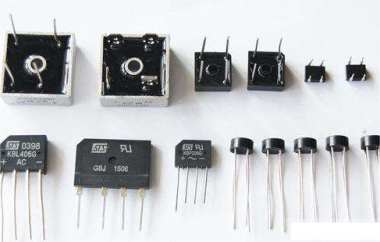
In electronics repair and design, properly replacing diodes is key to keeping circuits running smoothly. When working with electronic components, replacing diodes is a common challenge for technicians. Since diodes come in many types with varying characteristics, using the wrong replacement can not only degrade circuit performance but also damage other components. Mastering the principles and techniques of diode replacement is essential for electronics engineers, repair technicians, and hobbyists. The core rule for replacing diodes is to ensure that the substitute component meets the circuit's requirements, ideally using the same model and type.
Catalog
5. Replacing Varactor (Varicap) Diodes
I. What is a Diode?
A diode is an electronic component that allows current to flow in only one direction. It's commonly used for controlling current direction, rectification, voltage regulation, and signal modulation. Depending on its structure and application, diodes can be classified into various types, such as rectifier diodes, switching diodes, Zener diodes, detector diodes, and varactor diodes. When replacing any type of diode, it's important to consider its electrical parameters, package type, and suitability for the intended application.
II. Diode Replacement Methods
1. Replacing Detector Diodes
Detector diodes are mainly used in demodulation circuits to extract low-frequency signals from high-frequency ones. These diodes are often point-contact germanium types, such as the 2AP series, which have low junction capacitance and good high-frequency performance.
When replacing a detector diode, first choose one made from the same semiconductor material and with similar key parameters. In special cases, a high-frequency germanium transistor with one damaged PN junction can be used as a substitute. Keep in mind that detector diodes require high-frequency performance, so any replacement must match the original diode's frequency characteristics.
2. Replacing Rectifier Diodes
Rectifier diodes are primarily used to convert AC to DC and are widely applied in power supply circuits. When replacing a rectifier diode, you need to consider key parameters like maximum rectified current, maximum reverse voltage, and reverse recovery time.
Here are some basic rules for replacement: a diode with a higher reverse voltage rating can replace one with a lower rating, but not vice versa. Similarly, a diode with a higher rectified current rating can replace one with a lower rating, but a lower-rated diode should never replace a higher-rated one. In switching power supplies, make sure to choose a fast-recovery diode with a short reverse recovery time.
3. Replacing Zener Diodes
Zener diodes are mainly used to provide a stable reference voltage or as protective components in overvoltage circuits. When replacing a Zener diode, the two most important parameters are its voltage rating and power dissipation.
Ensure the replacement diode has the same voltage rating as the original. For power dissipation, a higher-power Zener diode can replace a lower-power one—for example, a 0.5W, 6.2V Zener can be replaced with a 1W, 6.2V diode. But never replace a high-power Zener with a lower-power one, as this could cause overheating and damage the new diode.
4. Replacing Switching Diodes
Switching diodes are used for their fast switching properties to function as electronic switches in circuits. Depending on the application, they can be normal, high-speed, or ultra-fast types.
When replacing a switching diode, choose a type suited to the circuit's operating frequency. For medium-speed circuits, the 2AK series standard switching diode is a good option. High-speed circuits require a fast-recovery diode with a short reverse recovery time. In general, a high-speed diode can replace a standard switching diode, and a diode with a higher reverse breakdown voltage can replace one with a lower voltage rating.
5. Replacing Varactor (Varicap) Diodes
Varactor diodes are special diodes whose junction capacitance changes with the applied reverse voltage, making them ideal for tuning circuits and frequency modulation.
When replacing a varactor diode, pay close attention to the junction capacitance range. The replacement should have the same or very similar capacitance range as the original. Other parameters like operating frequency and quality factor (Q) should also be considered. Due to the specific nature of varactors, it's best to use the exact original model whenever possible.
III. Conclusion
Properly replacing diodes not only restores circuit function but also improves overall system stability and reliability. When doing replacements, consider electrical parameters, package type, application context, and quality certifications to ensure the substitute is suitable. Gaining practical experience and consulting diode datasheets will help you make the best replacement choices every time.




